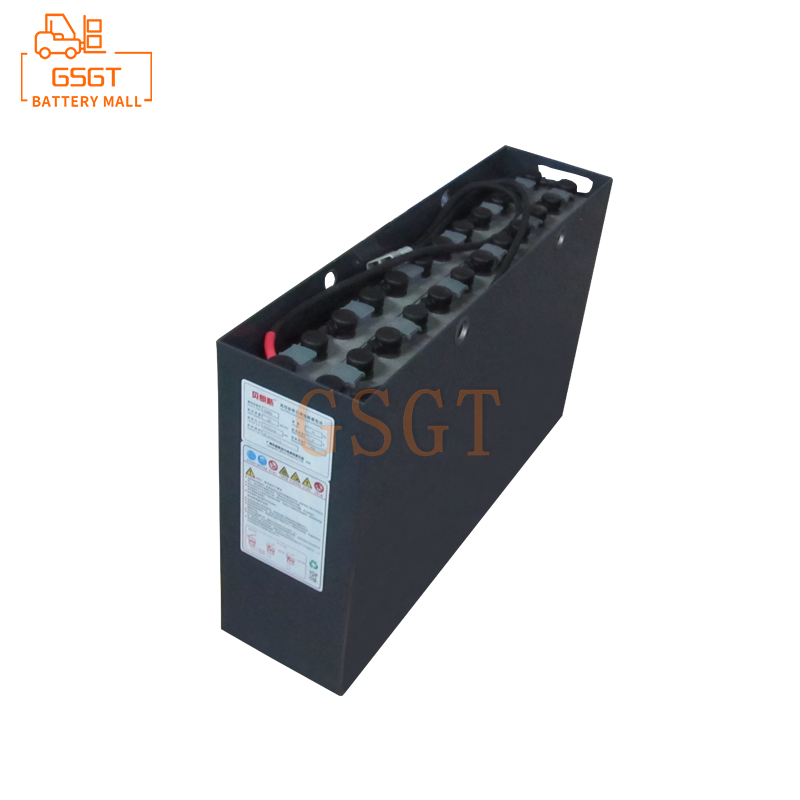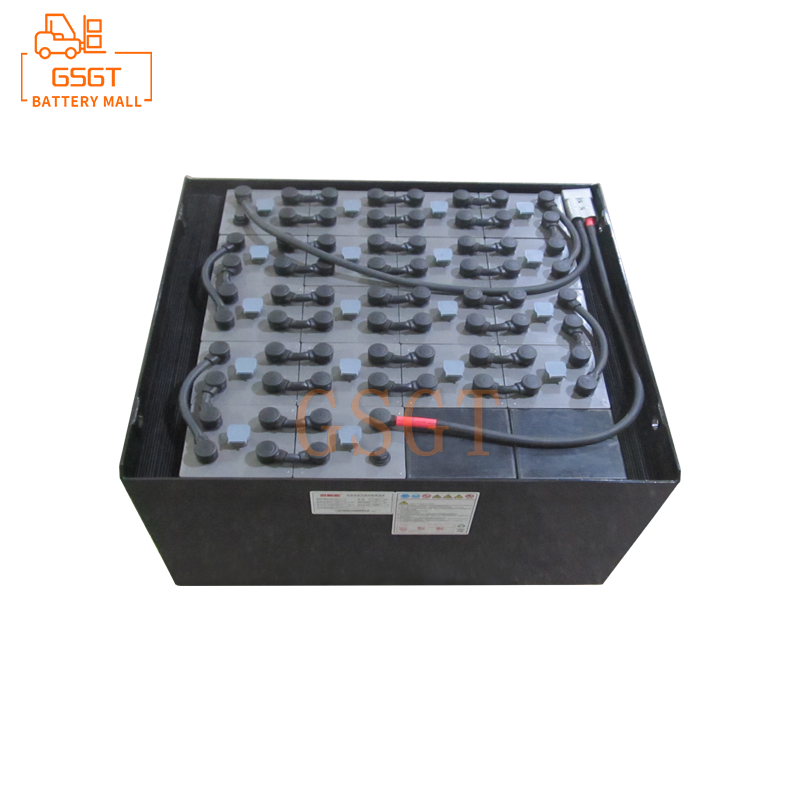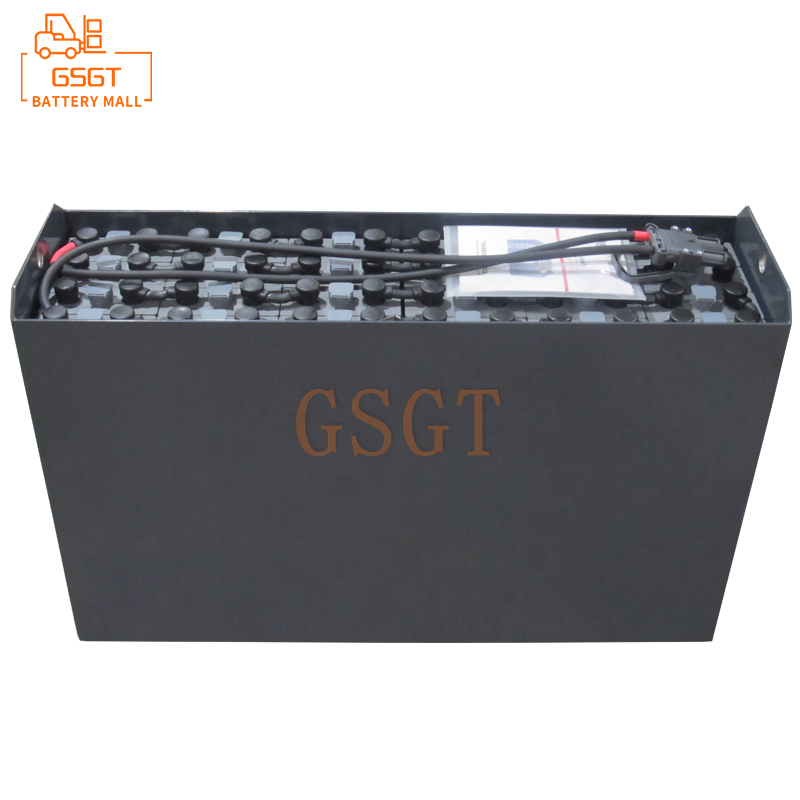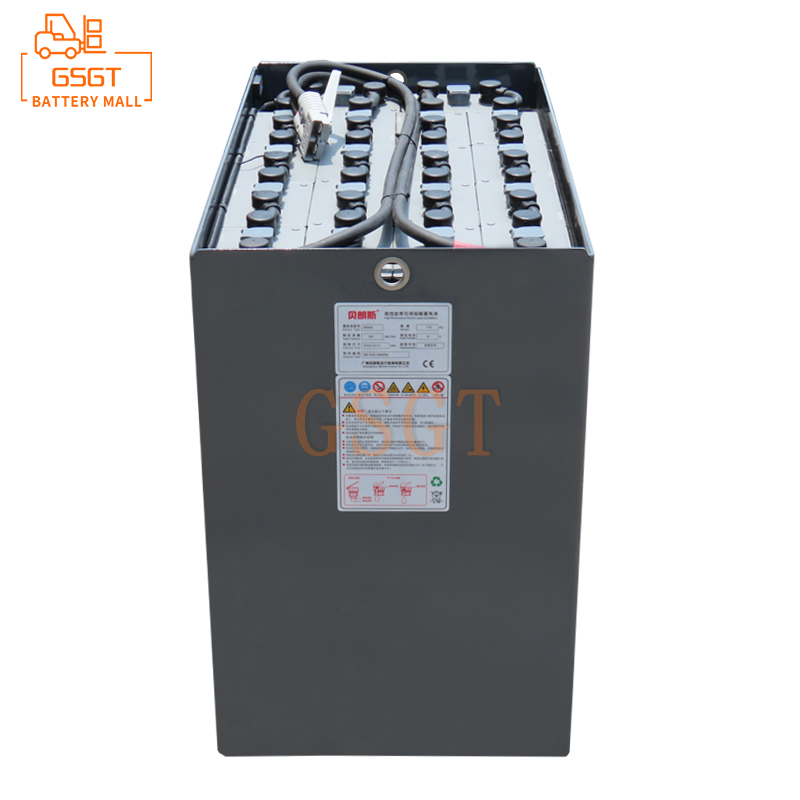Time:2025-06-05 11:35:03
Browse:597
In modern logistics and industrial production, forklifts, as an important material handling equipment, play a crucial role. As a key power source for forklifts, the performance and lifespan of forklift lead-acid batteries directly affect the normal operation and usage cost of forklifts. In the actual usage process, deep discharge of lead-acid batteries in forklifts is a common but extremely harmful problem that requires widespread attention.
The working principle of lead-acid batteries is based on electrochemical REDOX reactions. During the discharge process, lead dioxide on the positive plate and lead on the negative plate react with sulfuric acid in the electrolyte. The cathode reaction is: PbO₂ + 4H⁺ + SO₄²⁻ + 2e⁻ → PbSO₄ + 2H₂O; The negative electrode reaction is: Pb + SO₄²⁻ → PbSO₄ + 2e⁻. The overall reaction equation is: PbO₂ + Pb + 2H₂SO₄ ⇌ 2PbSO₄ + 2H₂O. Through these reactions, chemical energy is converted into electrical energy to power forklifts. During charging, the reaction proceeds in reverse, converting electrical energy into chemical energy for storage.
The harm of deep discharge to forklift lead-acid batteries is multi-faceted. First of all, the most significant impact is the sulfation of the plates. When the battery is over-discharged, the amount of lead sulfate produced on the plates increases significantly. Due to the large depth of discharge, lead sulfate cannot be completely converted back to its original active substance during the subsequent charging process. Over time, these lead sulfates will gradually form large and hard crystals that adhere to the surface of the plates. This is known as the sulfation of the plates. Sulfation of the plates will cause a sharp increase in the internal resistance of the battery, hindering the smooth conduction of current. From the perspective of actual usage effects, forklifts may encounter problems such as insufficient power and difficulty in starting. Goods that could have been easily handled by forklifts may fail to complete the handling tasks normally after the battery plates are vulcanized, seriously affecting work efficiency. Moreover, the sulfation of the plates is an irreversible process. Once formed, even if some repair measures are taken, it is very difficult to fully restore the performance of the battery.
Deep discharge will also greatly shorten the service life of the battery. Under normal circumstances, forklift lead-acid batteries can be used for a certain number of cycles under reasonable charging and discharging conditions. Generally, the cycle life of high-quality forklift lead-acid batteries may be around 1,500 times. However, if deep discharges occur frequently, the battery's cycle life will be significantly shortened, possibly only reaching half or even less of that under normal circumstances. This means that enterprises need to replace batteries more frequently, increasing the cost of equipment maintenance. Take a set of forklift lead-acid batteries worth several thousand yuan as an example. If their service life is shortened from the original three years to one and a half years due to deep discharge, the enterprise's expenditure on battery procurement will increase significantly. Moreover, frequent battery replacement will also lead to an increase in forklift downtime, affecting the continuity of production operations and causing potential economic losses to enterprises.
The decline in battery capacity is also one of the serious consequences brought about by deep discharge. Battery capacity is an important indicator for measuring a battery's ability to store electrical energy. Deep discharge causes the active substances on the plates to be excessively consumed and damaged in repeated chemical reactions, preventing them from fully participating in electrochemical reactions, thereby reducing the amount of electricity that the battery can store and release. The battery that was originally fully charged and could meet the forklift's working needs for a whole day may only be able to work for half a day or even less after multiple deep discharges. This requires operators to frequently charge the battery, which not only increases the charging cost but also reduces the actual usage efficiency of the forklift. In some logistics warehouses or production workshops where the continuity of forklift operations is highly demanded, frequent charging may also disrupt the entire production operation plan and affect the normal operation of the enterprise.
Deep discharge can also pose a risk of battery overheating. Due to the increased internal resistance of the battery, more heat is generated when the current passes through the battery during the charging and discharging processes. If heat dissipation is not timely, the battery temperature will continue to rise. High temperatures will further accelerate the chemical reactions inside the battery, creating a vicious cycle. Excessively high temperatures not only cause damage to the battery's casing, leading to deformation and cracking, but also accelerate the aging and damage of internal components such as the plates and electrolyte, seriously affecting the battery's performance and safety. In extreme cases, battery overheating may even cause safety accidents such as fires, posing a huge safety hazard to enterprises.
To avoid the hazards caused by deep discharge of lead-acid batteries in forklifts, enterprises and operators need to take a series of effective measures. During daily use, operators should closely monitor the battery power display. When the power drops to a certain level, the battery should be charged in time to avoid excessive discharge. It is generally recommended to charge the battery when the remaining power is around 30% to 40%. Enterprises can formulate strict forklift usage and charging management systems, provide training for operators, and enhance their awareness of the correct use and maintenance of batteries. At the same time, choose a reliable charger and perform the correct charging operation in accordance with the battery's specifications and requirements. For instance, control the charging current and voltage to prevent overcharging and undercharging from occurring. In addition, regular inspection and maintenance of the battery, including checking the liquid level and density of the electrolyte, cleaning the dirt and debris on the battery surface, etc., to promptly identify and solve potential problems, also helps to extend the battery's service life and reduce the hazards caused by deep discharge.
Deep discharge of lead-acid batteries in forklifts poses serious hazards to both the batteries themselves and the normal operation of forklifts. From plate sulfation, shortened lifespan, reduced capacity to overheating risks and many other aspects, it will bring economic losses and safety hazards to enterprises. Therefore, both forklift operators and enterprise managers should fully recognize the severity of this issue and take effective measures to prevent and avoid deep discharge of forklift lead-acid batteries, ensuring the safe and efficient operation of forklifts and reducing the operating costs of enterprises.

$1060

$4690

$3400

$1630

MESSAGE
Professional And Efficient
Security
Affordable Price
Professional Services